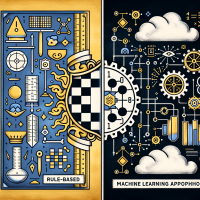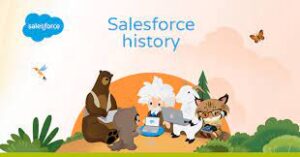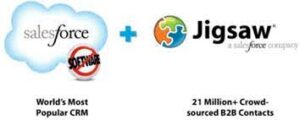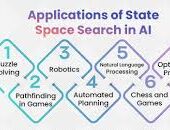Choosing the Right Tool for Salesforce Deduplication: Rule-Based vs. Machine Learning Approaches
When you browse Salesforce AppExchange for a deduplication solution, you’re presented with two primary options: rule-based deduplication tools or machine learning-powered applications. Both have their strengths, but understanding their methods will help you make an informed decision. Below, we’ll explore these approaches and their pros and cons to guide your choice.
Why Salesforce’s Built-in Deduplication Falls Short
Salesforce, while a powerful CRM, doesn’t excel at large-scale deduplication. Its native tools are limited to basic, rule-based matching, which may struggle with complexities like typos, inconsistent formatting, or unstructured data.
Additionally, Salesforce’s deduplication features lack the scalability required for organizations dealing with large datasets or multiple data sources (e.g., third-party integrations, legacy systems). Businesses often need supplemental tools to address overlapping records or inconsistencies effectively.
How Rule-Based Deduplication Works
Popular rule-based tools on AppExchange, such as Cloudingo, DemandTools, DataGroomr, and Duplicate Check, require users to create filters that define what constitutes a duplicate.
For example:
- A user may initially set a filter like LastName+Email+Company, but as duplicates persist, they might refine it further to include PhoneNumber or other criteria.
- Tools like DemandTools offer more flexibility, including “winning rules” to determine which record to keep based on specific criteria (e.g., prioritizing records where the lead source is “website”).
Ultimately, the user manually defines the rules, deciding how duplicates are identified and handled.
Benefits of Rule-Based Deduplication
- Customization: You control which fields and parameters define duplicates.
- Simplicity: Ideal for straightforward, predictable duplication patterns.
- Transparency: Rules are easy to review, modify, and audit, ensuring clarity in the deduplication process.
Drawbacks of Rule-Based Deduplication
- Limited flexibility: Predefined rules can’t adapt to subtle variations like typos or context differences.
- Scalability challenges: Managing rules for large datasets can become cumbersome.
- Risk of errors: Poorly defined rules can result in false positives or negatives.
How Machine Learning-Based Deduplication Works
Machine learning (ML)-powered tools rely on algorithms to identify patterns and relationships in data, detecting duplicates that may not be apparent through rigid rules.
Key Features of ML Deduplication
- Data preprocessing: Cleans inconsistencies like missing values or mismatched formats.
- Feature extraction: Identifies key attributes (e.g., names, addresses) as indicators of duplication.
- Model training: Uses labeled datasets to recognize patterns, including typos, abbreviations, and contextual differences.
- Continuous learning: Models improve over time, adapting to evolving data patterns.
Techniques Used
- Natural Language Processing (NLP) for textual similarities.
- Clustering algorithms to group similar records.
- Deep learning models for complex or unstructured data types.
Benefits of ML-Based Deduplication
- Adaptability: Learns and evolves with your data.
- Accuracy: Excels at identifying subtle differences (e.g., misspellings, abbreviations).
- Scalability: Handles large datasets efficiently.
- Flexibility: Works with structured and unstructured data.
- Reduced manual effort: Minimizes user involvement after initial training.
Drawbacks of ML-Based Deduplication
- Dependency on data quality: Requires high-quality, labeled training data for accuracy.
- Complexity: Needs expertise in data science for setup and maintenance.
- Cost: Can be resource-intensive to develop, train, and deploy.
When to Choose Rule-Based vs. Machine Learning Deduplication
Choose Rule-Based Deduplication If:
- You have a small-to-medium-sized dataset with predictable duplication patterns.
- You prefer transparent and auditable processes (e.g., for compliance).
- You lack advanced technical resources or need a cost-effective, quick-start solution.
Choose Machine Learning-Based Deduplication If:
- Your data includes complex, unstructured, or large datasets.
- You’re dealing with frequent duplicates caused by typos, context differences, or evolving patterns.
- Your organization prioritizes long-term accuracy and can invest in data science expertise and resources.
Selecting the Right Deduplication Tool
When evaluating tools on AppExchange, consider these factors:
- Data Scale and Complexity:
- Use rule-based tools for smaller datasets and simple duplication patterns.
- Opt for ML-powered tools for larger datasets with complex or unstructured data.
- Ease of Use:
- Rule-based tools often feature user-friendly interfaces for managing filters and rules.
- Advanced Features:
- For ML tools, look for capabilities like cross-object matching, support for unstructured data, and customizable fields.
- Integration and Scalability:
- Ensure the tool integrates seamlessly with your Salesforce instance and scales with your data growth.
- Cost vs. Value:
- Balance the cost of the tool with its potential to enhance data quality and operational efficiency.
- Vendor Support and Reviews:
- Choose a tool backed by reliable support and positive user feedback.
Tectonic’s Closing Thoughts
Rule-based and machine learning-based deduplication each serve distinct purposes. The right choice depends on your data’s complexity, the resources available, and your organization’s goals. Whether you’re seeking a quick, transparent solution or a powerful, scalable tool, AppExchange offers options to meet your needs and help maintain a clean Salesforce data environment.













